Inverse - Definition, Examples, Quiz, FAQ, Trivia
Learn how inverse operations undo each other with easy explanations, examples, and practice activities
What is Inverse in Math?
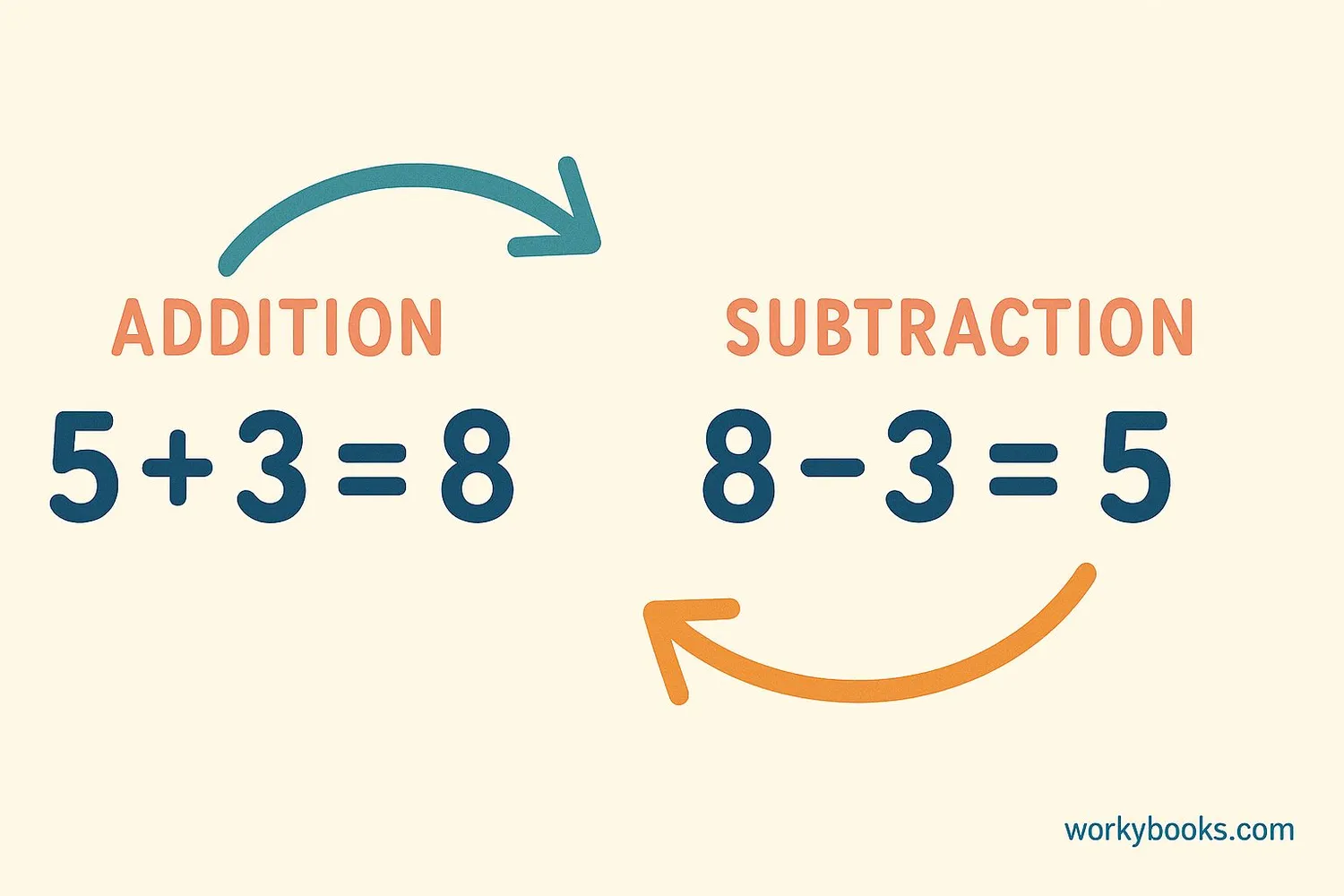
In mathematics, an inverse is something that reverses or undoes another operation. Think of it like a magic eraser that can undo what you just did!
For example, if you add 5 to a number, the inverse operation would be to subtract 5. This would bring you back to your original number. Inverse operations are like opposites that cancel each other out.
Understanding inverses helps us solve equations and check our work. If we know that two operations are inverses, we can use one to reverse the effect of the other.
Key Concept
Inverse operations are operations that undo each other. Addition and subtraction are inverses, and multiplication and division are inverses.
Additive Inverse
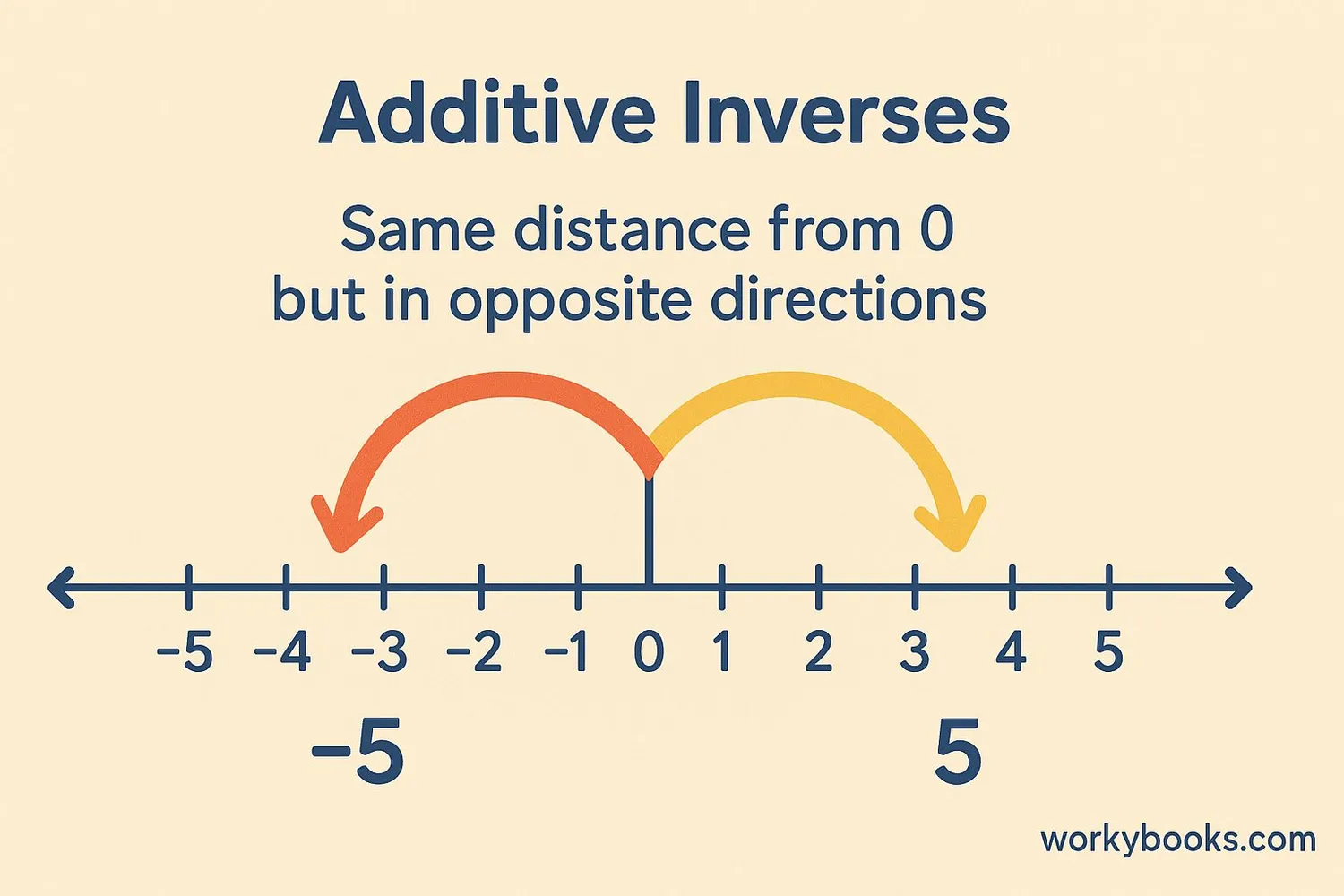
The additive inverse of a number is what you add to that number to get zero. For any number a, its additive inverse is -a.
Additive Inverse Formula
Adding a number and its additive inverse always gives zero.
Example 1: The additive inverse of 7 is -7 because 7 + (-7) = 0
Example 2: The additive inverse of -3 is 3 because -3 + 3 = 0
Example 3: The additive inverse of 0 is 0 because 0 + 0 = 0
Additive inverses are helpful when solving equations. If you have x + 5 = 10, you can add the additive inverse of 5 (which is -5) to both sides to find x.
Remember
The additive inverse of a number is sometimes called its "opposite" because it's the same number with the opposite sign.
Multiplicative Inverse
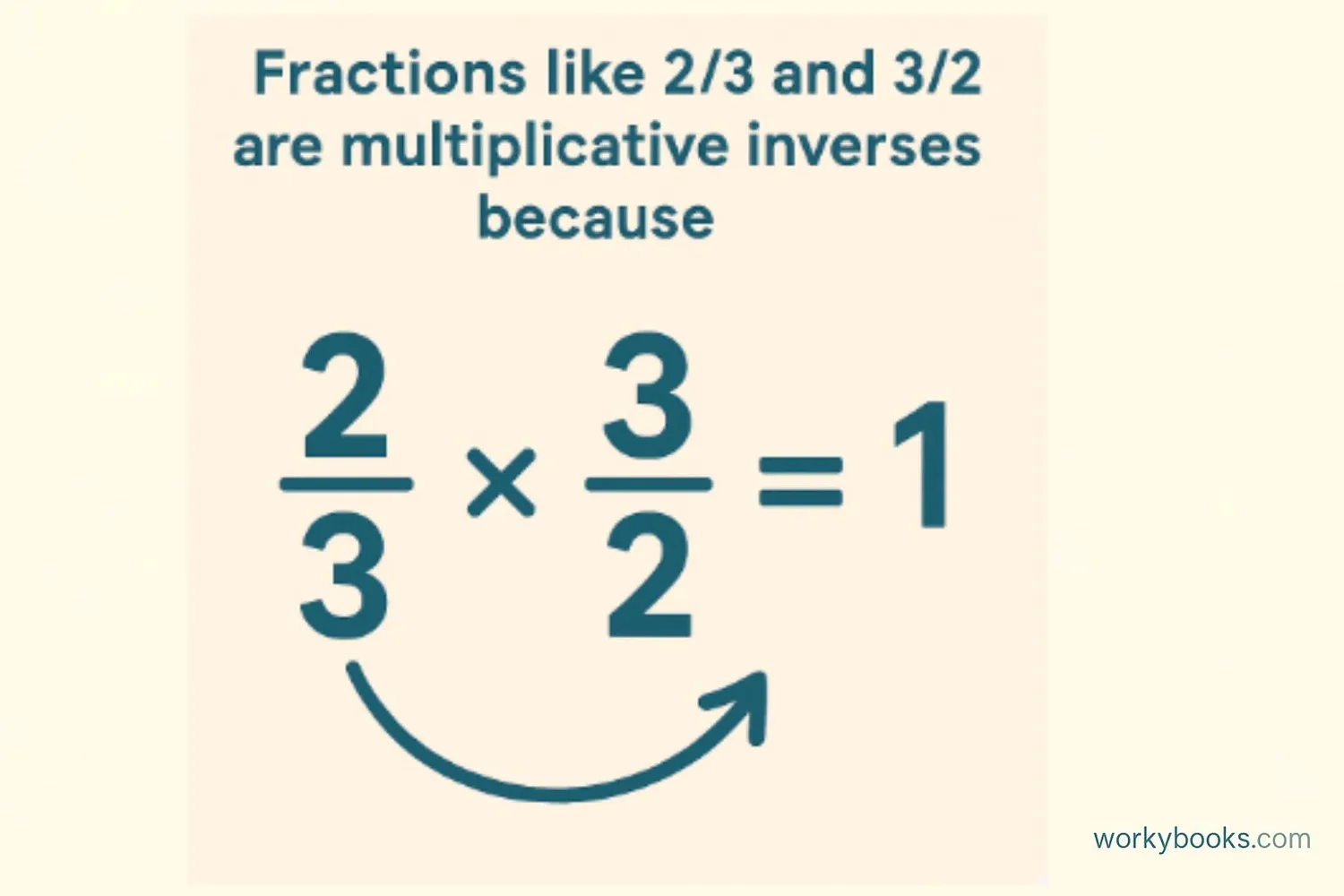
The multiplicative inverse of a number is what you multiply that number by to get 1. For any nonzero number a, its multiplicative inverse is 1/a.
Multiplicative Inverse Formula
Multiplying a number by its multiplicative inverse always gives 1.
Example 1: The multiplicative inverse of 5 is 1/5 because 5 × (1/5) = 1
Example 2: The multiplicative inverse of 2/3 is 3/2 because (2/3) × (3/2) = 6/6 = 1
Example 3: The multiplicative inverse of -4 is -1/4 because -4 × (-1/4) = 1
Zero (0) does not have a multiplicative inverse because you cannot multiply 0 by anything to get 1.
Multiplicative inverses are useful when solving equations with multiplication or division. If you have 3x = 12, you can multiply both sides by the multiplicative inverse of 3 (which is 1/3) to find x.
Remember
To find the multiplicative inverse of a fraction, simply flip the numerator and denominator.
Inverse Operations
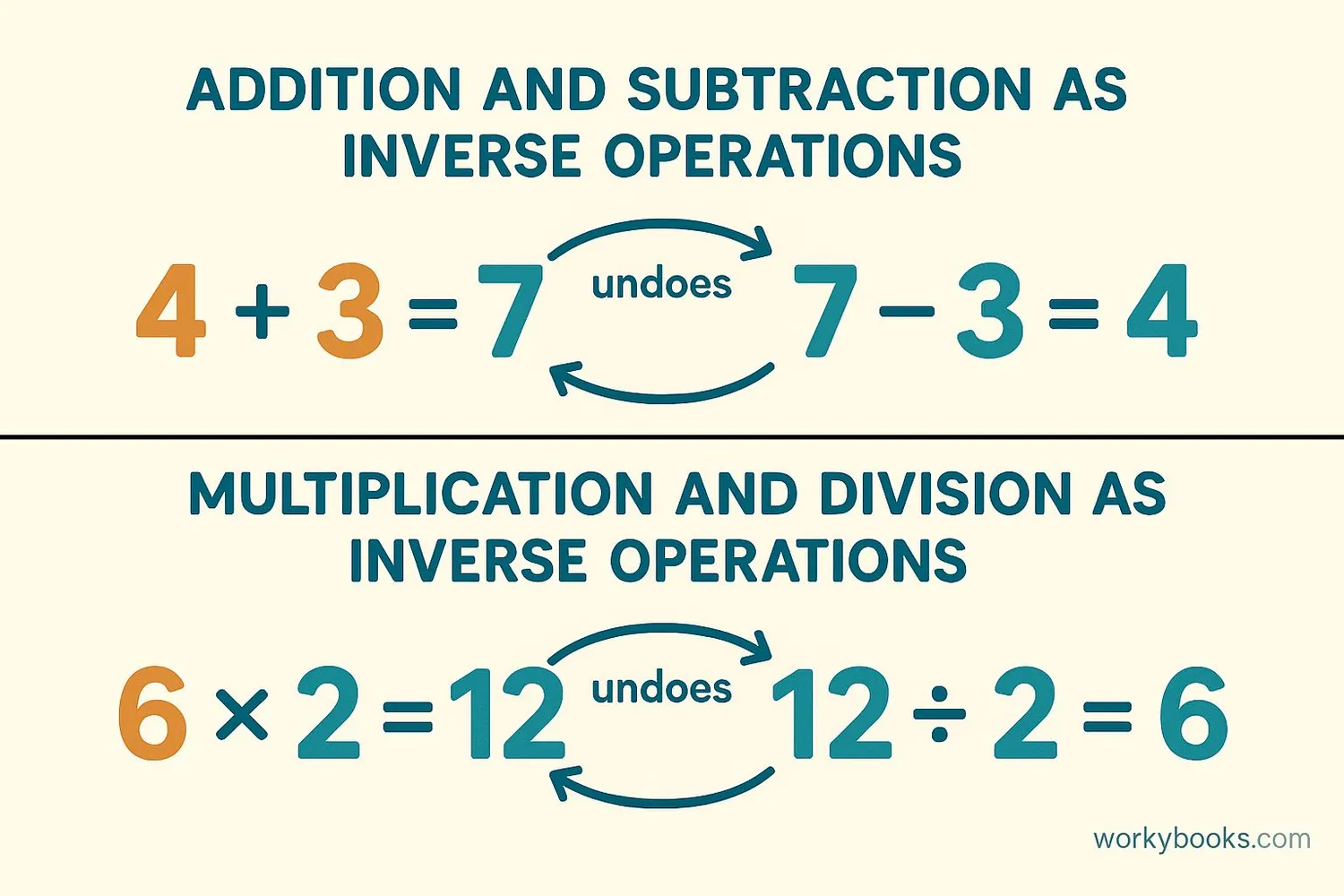
Inverse operations are operation pairs that undo each other. The main pairs of inverse operations are:
Addition
+
Subtraction
-
Multiplication
×
Division
÷
These operations are inverses because:
• Adding and then subtracting the same number brings you back to the original number
• Multiplying and then dividing by the same number brings you back to the original number
Example 1: Start with 8, add 5 → 13, subtract 5 → 8 (back to start)
Example 2: Start with 10, multiply by 2 → 20, divide by 2 → 10 (back to start)
We use inverse operations to solve equations. If we have an equation like x + 3 = 7, we can use the inverse of addition (subtraction) to find x: x = 7 - 3 = 4
Key Concept
Inverse operations are like mathematical undo buttons. They allow us to reverse operations and solve equations.
Real-World Examples
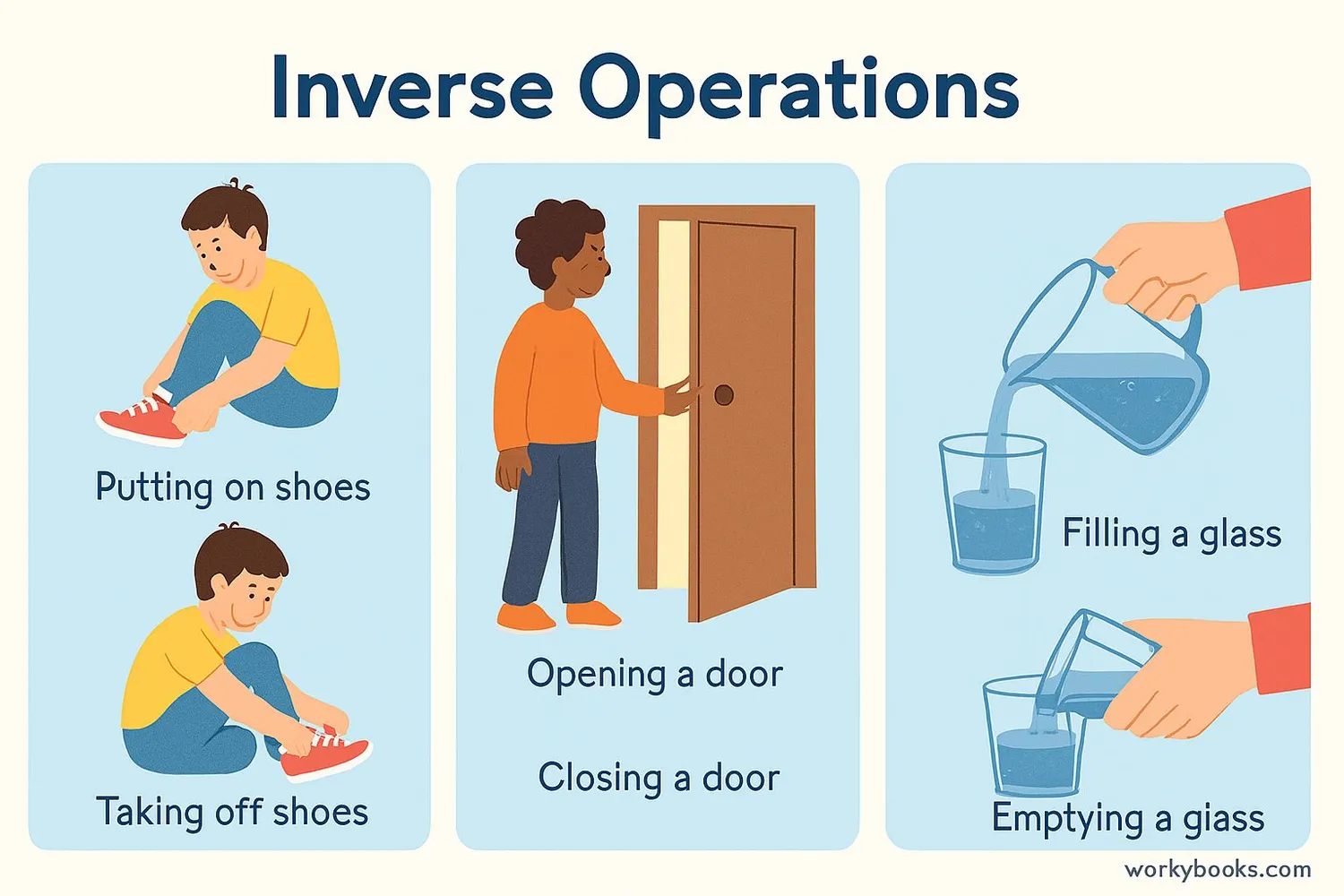
Inverse operations are all around us in everyday life. Let's look at some examples:
Example 1: Putting on and taking off shoes
Putting on shoes and taking them off are inverse operations. One action reverses the other.
Example 2: Opening and closing a door
Opening a door and closing it are inverse operations. They undo each other.
Example 3: Filling and emptying a glass
Pouring water into a glass and pouring it out are inverse operations.
Math Example 1: Solve x + 8 = 15
Use the inverse of addition (subtraction): x = 15 - 8 = 7
Math Example 2: Solve 4y = 20
Use the inverse of multiplication (division): y = 20 ÷ 4 = 5
Math Example 3: Check your work using inverses
If you calculate 127 + 48 = 175, check by using the inverse: 175 - 48 should equal 127
Practice finding inverse operations in your daily activities and use them to check your math work!
Practice Tip
Always use inverse operations to check your work. If you add numbers, subtract to check. If you multiply, divide to check.
Inverse Operations Practice Quiz
Test your understanding of inverse operations with this 5-question quiz. Choose the correct answer for each question.
Frequently Asked Questions
Here are answers to common questions about inverse operations:
Math Trivia
Discover interesting facts about inverse operations and mathematics:
Ancient Understanding
The concept of inverse operations dates back to ancient civilizations. The Egyptians used inverse operations in their accounting systems over 4,000 years ago to balance records and verify calculations.
Computer Science
In computer programming, inverse operations are fundamental. Encryption algorithms use mathematical operations that are easy to compute in one direction but difficult to reverse without a special key, protecting our digital information.
Space Travel
NASA engineers use inverse operations extensively in space mission calculations. To get a spacecraft to Mars, they calculate trajectories forward, then use inverse operations to verify their calculations and make corrections.
Mathematical Language
The word "inverse" comes from the Latin word "invertere" which means "to turn upside down" or "to reverse." This perfectly describes what inverse operations do—they reverse the effect of other operations.





